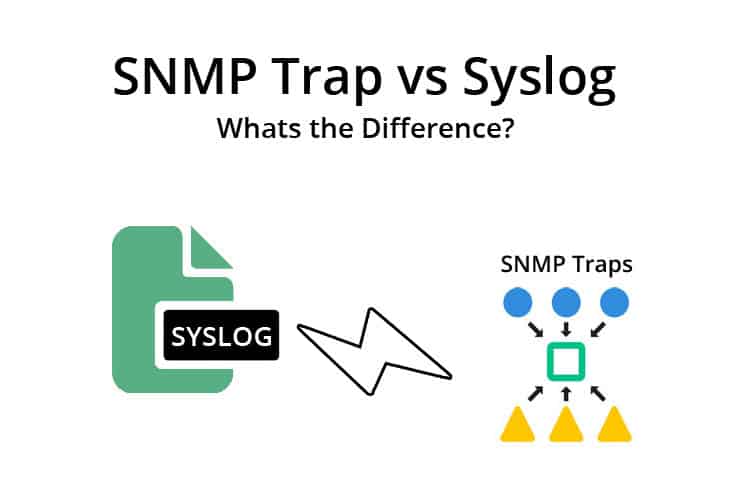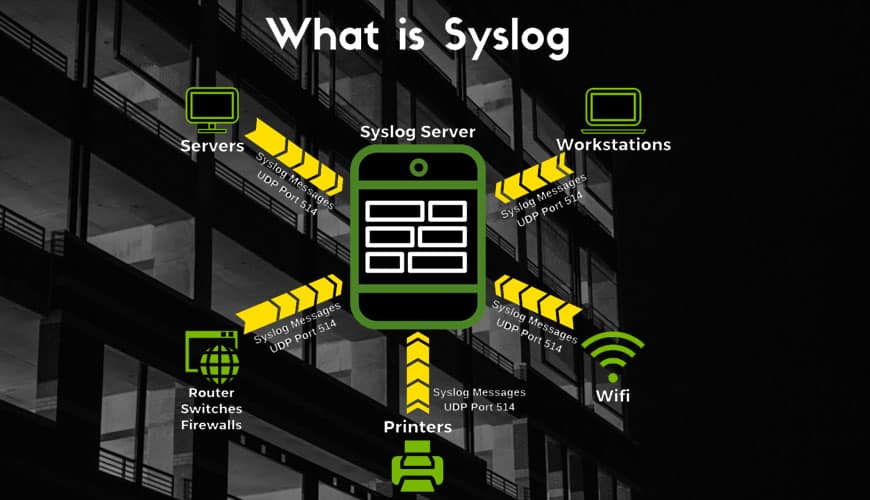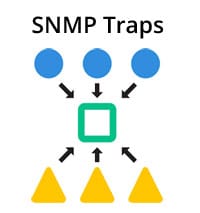We may earn a commission if you make a purchase through the links on our website.
SNMP Trap vs Syslog – Whats the Difference?

UPDATED: March 23, 2023
IT admins use either Syslog or SNMP traps for monitoring purposes.
Both standards provide very similar monitoring information but through different functionalities.
Summary of Each:
Syslog works more as a troubleshooting tool and is used when logs are needed for an investigation.
Although you can use Syslog for real-time feeds, it is often only used for quick historical events.
SNMP Traps, on the other hand, works on device-based events. It provides real-time information and allows for better management.
In most cases and depending on the requirements using a combination of both is the best solution. For more detailed information about the differences, keep reading!
What is Syslog?

Syslog is a message logging protocol for exchanging logs of different severities from multiple devices.
Its layered architecture is formed by three components, the Syslog device, which generates the logs, the Syslog relay which forwards the logs to a collector, and the Syslog collector (or server), which receives and stores the logs.
The format of each log includes timestamps, host IP addresses, event message, severity, diagnostics, and more. Syslog allows selecting the type of information that is captured.
These logs can be anything from ACL events, configuration changes, authentication attempts, etc.
Syslog primary functionality:
Gather logs for troubleshooting and monitoring.
What is SNMP Traps?

SNMP Traps is one of the five (Trap, Get, Get-Next, Get-Response, Set), event message types used by SNMP.
The SNMP Traps are generated by an SNMP-enabled device (the agent) and sent to a collector (the manager).
The SNMP Trap informs the SNMP manager in real-time when an important event happened.
The SNMP trap uses thresholds configured at the agent. When a threshold is crossed at the agent, the SNMP trap is triggered and sent to the manager.
SNMP traps send data using the numeric OIDs which are translated using SNMP MIBs (Management Information Bases).
The SNMP Traps are not requested by the SNMP manager. The SNMP Get message can be used (wich additional software) to poll information from the agent.
SNMP Traps primary functionality: Collect events in real-time for management and monitoring.
Syslog vs SNMP Traps
Similarities between Syslog and SNMP traps:
- Both are alert messages generated from a remote device and sent to a central collector.
- Both provide similar “monitoring” information.
- Both function on demand and are not solicited.
Differences between Syslog and SNMP traps:
| Protocol | Messages | Severity | Ports | Security | Functionality |
| Syslog | Centralized Logs | Level 0 – 7 | UDP 514 | No authentication mechanisms | Troubleshooting and Monitoring. |
| SNMP Traps | Real-time Traps | N/A | UDP 161 and 162 | Better through SNMPv3 | Management and Monitoring. |
- Overall, the SNMP protocol defines methods for remote monitoring and configuration through other types of messages. Syslog is just an alerting mechanism (same as SNMP traps); it does not define any standard for remote configuration.
- Syslog provides more granular information in the logging messages. Although it is not the standard, Syslog is often used for troubleshooting and debugging, and SNMP traps for device management and reporting.
- Syslog Messages vs. SNMP MIB requests: SNMP Get requests messages can be used for polling from agents using the local MIB. Syslog can’t be used to poll information.
SNMP Trap vs Syslog FAQs
What are the differences between SNMP traps and syslog?
SNMP traps are specifically designed for sending alerts and notifications from network devices to an NMS, while syslog is a more general-purpose logging mechanism that can be used to log a wider range of events and messages. SNMP traps are often used for real-time monitoring and alerting, while syslog is typically used for long-term storage and analysis of log data.
Which one is better for network monitoring, SNMP traps or syslog?
The choice between SNMP traps and syslog for network monitoring depends on the specific requirements and use case. If real-time monitoring and alerting is a priority, then SNMP traps may be the better choice. If long-term storage and analysis of log data is more important, then syslog may be a better fit.
Can SNMP traps and syslog be used together for network monitoring?
Yes, SNMP traps and syslog can be used together for network monitoring. SNMP traps can be used for real-time monitoring and alerting, while syslog can be used for long-term storage and analysis of log data.
What are some popular tools for receiving SNMP traps and syslog messages?
Some popular tools for receiving SNMP traps and syslog messages include Nagios, Zabbix, SolarWinds, and Graylog.